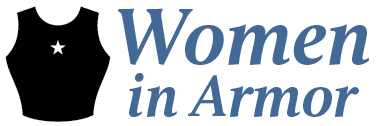Sizing in sports bras can be quite tricky. Bra sizes are not standardized, so don’t expect to find the same sports bra size as your everyday bra size. One manufacturer’s 34D compression bra can be the next one’s 36C (band measurements do not always equate to size). If it’s possible, have someone else measure your bra band circumference and your breast apex circumference, which may or may not be at the nipples. Then go to the manufacturer’s website, put in your measurements, and use their size chart as a place to begin.
The professional bra fit criteria in my last bra article will help you find the right fit. Looking online will also give you numerous options. As you peruse the web, note these specific features to consider.
Cups:
Cups that rise higher on the chest and sides encase the whole breast to control movement. A stiffer fabric, especially at the top of the cup, controls the breast’s upward, bouncing movement during moderate to intense activity. Side slings, a supportive fabric feature around the outside of the cup, control side-to-side movement.
Band:
The band provides most of the support; if the band moves on your body, the breasts move with it. Go for a wider, sturdier band with multiple hooks that supports the weight of your breasts and fits snugly (but not uncomfortably). Although it’s cumbersome, stay with hooks in the back; front closures only weaken the breast support. When you try on the bra make sure it fits on the last hook. Then as the elastic degrades, you can move up in hooks to maintain the band tautness and keep your bra longer.
Straps:
The trick to controlling the breasts from rising while running or jumping is keeping the straps on the shoulders. If the straps lose contact with the body, they lose control of the breast. It’s best to get a bra that has adjustable shoulder straps to customize the fit. Racer backs distribute weight and tension across the back, but no matter the strap type, wider, padded straps distribute weight and add comfort. The transition from the cup to the strap should be inelastic and graduate from large to small as it moves up the body. The transition area also helps restrict the breast’s upward movement in intense activity [4].
Gore:
The gore, the middle part of the bra between the breasts, is second only to the band in providing support. (Compression bras do not have a gore.) The gore should lie flat against your chest wall to help encase each breast separately in the cup. If the gore does not lie flat against your chest, the cups are too small, and the support will be inadequate.
Fabric:
The less elastic the better – avoid lace or stretchy materials like those found in fashion bras. Obviously, you need a little stretch, but only a little. Breathable, wicking fabrics are also important because women’s sweat production on the torso is concentrated in the areas the bra covers. Also bras without padding wick moisture better.
Underwire or wireless
This is a comfort decision, though underwire provides better shape for a better aesthetic.
